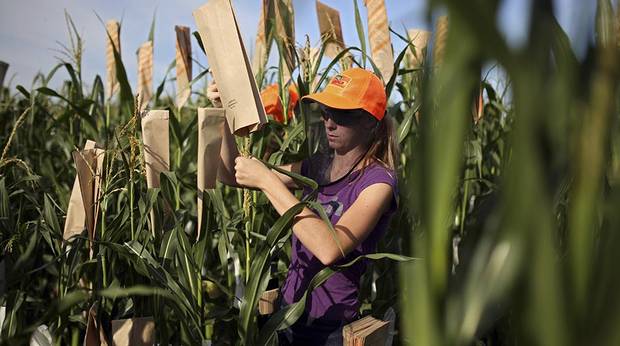
Wheat and canola are still kings of the Canadian Prairies, but corn is getting a lift from a couple of U.S. agri-giants and from global warming. Corn production has expanded north in the United States in recent years thanks to higher average temperatures and stronger crop varieties. Seed developers Monsanto and DuPont Pioneer are now eyeing Western Canada, too, investing tens of millions of dollars in new research laboratories and test plots.
The goal is to perfect new corn hybrids that can mature quickly during the relatively short Prairie summers and withstand the cool nights. “It’s good old conventional breeding,” says Dan Wright, who is leading the $100-million, 10-year Canadian corn project that Monsanto announced in 2013. DuPont Pioneer launched its $35-million, five-year initiative last year. Steve King, the company’s corn research director, says that a dash of climate change helps. Saskatchewan is expected to gain five more frost-free days in its yearly growing season over the next two decades. “As global temperatures go up, we can more easily move genetics from other regions around the world into Western Canada,” he says.
Alberta farmers grew just 40,000 acres of corn in 2014. But DuPont Pioneer says there could be as many as 10 million acres across Western Canada by 2025.
Crop yields of corn per acre are usually good, and so are profits. True, large global harvests can cause sharp drops in North American prices. But strong demand from ethanol plants and feedlots for cattle, hogs and chickens help moderate volatility.
The trouble is that it’s expensive to become a corn grower. It can cost $300,000 or more for a typical farmer to buy planting equipment. The crop also requires a lot of fertilizer and pesticides—which are sold by Monsanto and DuPont.
Mayans began cultivating corn in Mexico in about 2500 BC. It has taken centuries of breeding and genetic modification to make it more suitable for northern areas. The multinationals may compress the next big shift to less than a decade.
